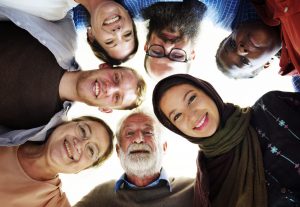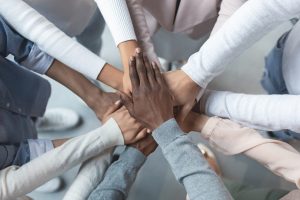Stand for Your Community – Diversity Counts

People from all walks of life are being encouraged to stand for their community to increase diversity in local government.
While we have made steps towards strengthening diversity, there is much more to do.
There are many examples of current and former councillors from diverse backgrounds who have made extraordinary contributions to their local councils and communities. We just need more people like them among the ranks of our local government sector.
Strong and effective councils are those that reflect the diverse communities they serve.
Local councils are the level of government closest to the community. They provide key infrastructure, facilities and services to local residents and are integral to improving the lifestyle and amenity of local communities.
Councillors represent their local community’s needs, wants and aspirations and make important decisions on behalf of their local community.
You don’t need any formal qualifications and you will receive training, support, expenses and fees if you are elected.
There is nothing more rewarding than serving in the level of government closest to the local community.
Online candidate training tool
The Office of Local Government has launched a comprehensive online candidate training tool.
The interactive resource provides candidates with detailed information about running for election and the roles and responsibilities of councils and councillors.
It is designed to arm election candidates with the know-how to launch their election campaign and serve their community to the best of their ability if they are elected.
Guides for candidates
The Stand for Your Community Candidate Guide contains comprehensive information about becoming and being a councillor, including eligibility and the nomination process.
This guide has been prepared as an introduction to the role of a councillor and the operation of councils. It is a starting point to help you decide whether you would like to run in the next council election.
Guides have also been tailored for prospective candidates who are women, Aboriginal or Torres Strait Islander residents, or members of multicultural communities.
- Stand for your community – Candidate Guide – PDF
- Stand for Your Community – A Guide for Women – PDF
- Stand for your community – A guide for Aboriginal and Torres Strait Islander people – PDF
- Stand for your community – A guide for culturally and linguistically diverse people – PDF
A Snapshot of Diversity in Local Government
After each local government election, the Office of Local Government reviews and analyses diversity information provided by councillors and candidates.
The NSW Candidate and Councillor Diversity Report 2017 provides an interesting snapshot of diversity in local government:
Women
- The 2016-17 council elections saw the highest percentage of female mayors on Office of Local Government records
- Of all mayors, 28 per cent are female compared to the previous high in 2008 of 23 per cent. In 2012 just 19 per cent of mayors were female
- At the 2016-17 elections, 38 per cent of all candidates were female, up from 36 per cent in 2012 and 33 per cent in 2008
- After the 2016-17 elections, 31 per cent of councillors were female, up from 28 per cent in 2012 and 27 per cent in 2008
- In 2016-17, the actual number of women who stood for election dropped by three per cent. This compared to growth between the 2008 and 2012 elections of nine per cent.
Age
- Under 30s are the most under-represented age category on councils, with only 4 per cent elected as councillors, despite comprising 16 per cent of the population
- The 60-69 age bracket is the most over-represented age range on councils at nearly three times the NSW population of that age.
Aboriginal and Torres Strait Islander
- In the 2016-17 elections, 2.6 per cent of candidates and 1.9 per cent of councillors identified as Aboriginal or Torres Strait Islander. In the 2016 Census, Aboriginal or Torres Strait Islanders made up 2.9 per cent of the population
- Aboriginal or Torres Strait Islander candidate numbers increased from 103 in 2012 to 110 in 2016-17, representing a 6.8 per cent increase
- Unlike candidates, Aboriginal or Torres Strait Islander councillor numbers decreased by three, from 27 in 2012 to 24 in 2016-17, the same number as in 2008.
Culturally diverse communities
- Over one-quarter (27%) of households in NSW speak a language other than English. In contrast, 10 per cent of candidates and 8 percent of councillors reported having a first language other than English
- The number of councillors who identified as having a first language other than English decreased marginally from 111 in 2012 to 105 in 2016-17.
People with disability
- Just 3.1 per cent of candidates and 2.7 per cent of councillors identified as having a disability, despite this group making up 16.9 per cent of the NSW population (based on 2018 ABS statistics).

